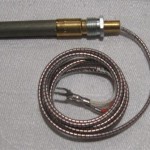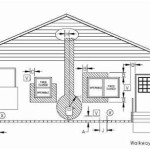Understanding the Heatilator Fireplace Mark 123: A Comprehensive Guide
The Heatilator Fireplace Mark 123, a widely recognized name in residential heating, represents a period of significant innovation in fireplace technology. This manual aims to provide a comprehensive overview of the Mark 123, covering its operational principles, maintenance requirements, troubleshooting strategies, and safety guidelines. Understanding the intricacies of this appliance is crucial for safe and efficient operation, ensuring longevity and reliable performance.
This document is not a replacement for the original Heatilator Fireplace Mark 123 manual, if available. This guide serves as supplementary information, offering expanded explanations and context around the original manufacturer's recommendations. Consulting with a qualified HVAC professional is always advisable for complex repairs or any modifications to the fireplace system.
Key Point 1: Operational Principles and Design Features
The Heatilator Fireplace Mark 123 typically employs a convective heating system, designed to maximize heat output and distribution. This is usually achieved through a double-walled firebox construction. The inner firebox contains the fire, while the outer walls create an air chamber. As the fire burns, air within the chamber is heated. This heated air then rises and is circulated into the room, providing consistent warmth.
The design incorporates strategically placed vents and dampers. These features control the airflow, influencing both the combustion rate and the direction of heat flow. Properly adjusting these elements is essential for efficient burning and preventing smoke from entering the living space. The design often includes a smoke shelf, a critical component for managing draft and preventing downdrafts from forcing smoke back into the room. The smoke shelf deflects incoming air upwards, assisting in the proper venting of smoke through the chimney or flue.
Many Mark 123 models are equipped with a damper system. This system is a movable plate or door within the flue designed to control the flow of air. When the fireplace is not in use, the damper should be closed to prevent heat loss up the chimney and to keep cold air and debris from entering the home. When the fireplace is in use, the damper must be fully opened to allow for proper ventilation of the smoke and combustion gases. Failure to do so can lead to dangerous carbon monoxide buildup.
The firebox is often constructed of heavy-duty steel or cast iron, materials chosen for their ability to withstand high temperatures and provide long-lasting durability. The exterior of the fireplace may be finished with a variety of materials, from brick and stone to metal panels, allowing for aesthetic integration into different home decors.
The combustion air intake system of the Heatilator Mark 123 is another crucial element. Some models draw combustion air directly from the room, while others are designed with an external air intake, pulling air from outside the house. External air intakes can improve efficiency by reducing the amount of heated air drawn from the room for combustion. Understanding the specific intake system of your Mark 123 is essential for optimizing its performance and preventing drafts.
Key Point 2: Maintenance and Cleaning Procedures
Regular maintenance is paramount for ensuring the safe and efficient operation of the Heatilator Fireplace Mark 123. Neglecting maintenance can lead to reduced heating efficiency, increased risk of chimney fires, and potential hazards such as carbon monoxide poisoning.
The most essential maintenance task is regular cleaning of the chimney or flue. Creosote, a highly flammable byproduct of wood combustion, accumulates inside the chimney. Over time, this buildup can ignite, causing a dangerous chimney fire. It is recommended to have the chimney inspected and cleaned annually by a qualified chimney sweep. The frequency of cleaning may need to be increased if the fireplace is used frequently or if softwoods are burned, as they tend to produce more creosote.
The firebox itself should also be cleaned periodically. Remove ashes and debris, using a shovel and a metal container. Avoid using a vacuum cleaner to remove ashes, as they can contain hot embers that can ignite the vacuum's filter and cause a fire. Dispose of ashes properly in a metal container away from combustible materials. Check the firebox for cracks or damage, and repair any issues promptly. Cracks can compromise the structural integrity of the firebox and allow for the escape of smoke and gases.
The damper should be inspected regularly to ensure it is functioning properly. Make sure it opens and closes smoothly and that there are no obstructions preventing a tight seal when closed. Lubricate the damper mechanism with a high-temperature lubricant if necessary. A poorly sealing damper can lead to significant heat loss when the fireplace is not in use.
Glass doors, if present, should be cleaned regularly with a fireplace glass cleaner. Avoid using abrasive cleaners, as they can scratch the glass. A clean glass door allows for a clear view of the fire and helps to radiate heat into the room. Check the door seals for damage and replace them if necessary to prevent air leaks.
The area around the fireplace should also be kept clean and free of flammable materials. Keep curtains, furniture, and other combustible items at a safe distance from the fireplace to prevent accidental fires. Regularly inspect the hearth and surrounding area for any signs of damage or wear.
Key Point 3: Troubleshooting Common Issues
Even with regular maintenance, certain operational issues may arise with the Heatilator Fireplace Mark 123. Understanding how to troubleshoot these problems can save time and money and ensure the continued safe operation of the appliance.
One common issue is difficulty starting or maintaining a fire. This could be due to several factors, including damp wood, insufficient airflow, or a poorly functioning damper. Ensure that the wood is properly seasoned and dry. Open the damper fully before starting the fire. If there is still difficulty, try opening a window slightly to provide more airflow to the firebox. Check the chimney for obstructions that may be preventing proper draft.
Smoke entering the room is another common problem. This can be caused by a downdraft in the chimney, a blocked chimney, or a negative pressure situation in the house. A downdraft can occur when cold air outside the house is heavier than the warm air inside the chimney. This can be resolved by preheating the chimney before starting a fire. This can be achieved by holding a lit torch or rolled-up newspaper in the flue for a few minutes to establish an upward draft. Check the chimney for obstructions such as bird nests or debris. Negative pressure in the house can be caused by exhaust fans, clothes dryers, or other appliances that draw air out of the house. Try opening a window slightly to equalize the pressure.
A smoky smell in the house, even when the fireplace is not in use, can indicate a creosote buildup in the chimney or a poorly sealing damper. Have the chimney inspected and cleaned by a qualified chimney sweep. Ensure that the damper is closing properly and sealing tightly. If the damper is damaged, it may need to be repaired or replaced.
Reduced heat output can be caused by a variety of factors, including insufficient airflow, a dirty firebox, or a damper that is not fully open. Ensure that the damper is fully open and that the firebox is clean and free of ash and debris. Check the combustion air intake system to ensure it is not blocked. Using properly sized and seasoned wood can also improve heat output.
Unusual noises, such as popping or cracking sounds, are often normal during the initial stages of a fire as the metal components of the fireplace heat up. However, persistent or excessively loud noises could indicate a problem. Inspect the firebox for cracks or damage. If you suspect a structural issue, consult with a qualified HVAC professional.
If the Heatilator Fireplace Mark 123 has a fan, ensure that its vents are clean. Dust buildup can cause overheating and premature motor failure. Regularly vacuum the fan vents to maintain adequate airflow. Make sure the fan is securely mounted and not vibrating excessively, which could indicate a worn bearing. If the fan is not functioning properly, consult a qualified technician for repair or replacement.
Addressing these common issues promptly can help extend the lifespan of the Heatilator Fireplace Mark 123 and ensure its continued safe and efficient operation. Always prioritize safety and consult with a qualified professional when in doubt.
Heatilator Mark 123 Hearth Com Forums Home
Heatilator Mark 123 3138 Problems Hearth Com Forums Home

Update Your Heatilator Mark 123 Fireplace In No Time
Heatilator Mark 123 3138 Problems Hearth Com Forums Home
Heatilator Mark 123 3138 Problems Hearth Com Forums Home

Update Your Heatilator Mark 123 Fireplace In No Time
Heatilator Mark 123 3138 Problems Hearth Com Forums Home
Heatilator Mark 123 Hearth Com Forums Home
Options To Renovate Surround Of Heatilator Mark 123 Hearth Com Forums Home
Options To Renovate Surround Of Heatilator Mark 123 Hearth Com Forums Home
Related Posts








